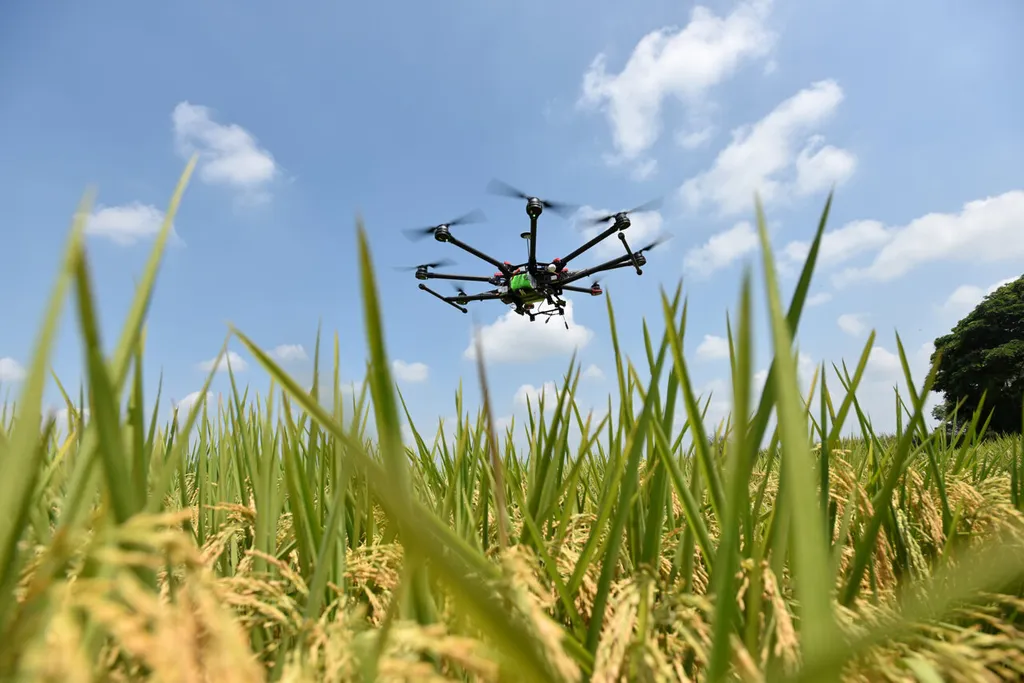In the heart of eastern China’s Hangjiahu Plain, a groundbreaking method is revolutionizing how we monitor rice cultivation, with implications that stretch far beyond the paddies. Researchers led by E Hailin from the School of Ecology and Applied Meteorology at Nanjing University of Information Science and Technology have developed a novel approach that combines optical and synthetic aperture radar (SAR) data to accurately map rice planting areas. This method, dubbed DNSF-Rice, is not just a scientific advancement; it’s a game-changer for agriculture, food security, and even the energy sector.
The Hangjiahu Plain, a region known for its intensive rice cultivation, has long been a challenge for remote sensing due to frequent cloud cover and variable precipitation. Traditional methods often rely on snapshots of key growth stages, missing the full picture of rice cultivation. “We needed a method that captures the complete temporal dynamics of vegetation and water-related indices throughout the entire rice growth cycle,” said E Hailin, the lead author of the study published in the journal ‘智慧农业’, which translates to ‘Smart Agriculture’.
The researchers turned to the power of Sentinel-1 and Sentinel-2 imagery, processed on the Google Earth Engine (GEE) platform. By integrating time-series data of the normalized difference vegetation index (NDVI) from Sentinel-2 and the dual-polarized water index (SDWI) from Sentinel-1, they created a robust framework for rice mapping. “The fusion of optical and SAR data compensates for the limitations of single-source imagery, especially during cloudy and rainy seasons,” explained Zhou Decheng, a co-author from the Deqing Academy of Satellite Applications.
The results are impressive. Over five consecutive years from 2019 to 2023, the DNSF-Rice method achieved an overall accuracy of over 96% and an F1-Score exceeding 0.96. This level of precision is crucial for ensuring national food security, evaluating greenhouse gas emissions, and optimizing water resource allocation. But the implications don’t stop at the farm gate.
For the energy sector, accurate monitoring of rice planting areas can inform bioenergy potential and land-use planning. Rice husks, for instance, are a valuable biomass resource for energy production. By understanding the spatial distribution and extent of rice cultivation, energy companies can better assess the availability of this resource and plan accordingly. Moreover, the method’s ability to operate at scale and in near-real-time can support dynamic decision-making, adapting to interannual variations in rice planting areas.
The study’s success highlights the importance of capturing the full temporal dynamics of both vegetation and water signals. This holistic approach not only improves the accuracy of rice mapping but also sets a new standard for agricultural monitoring. As Li Kun, a co-author from the Aerospace Information Research Institute, Chinese Academy of Sciences, noted, “This method is stable, reproducible, and adaptable for large-scale agricultural monitoring applications.”
Looking ahead, the DNSF-Rice method could be applied to other crops and regions, further enhancing our ability to monitor and manage agricultural landscapes. It could also be integrated with other data sources, such as weather forecasts and soil sensors, to create a comprehensive agricultural intelligence system. The possibilities are as vast as the fields it aims to map.
In the ever-evolving landscape of agritech, this research stands out as a beacon of innovation. By leveraging the complementary advantages of optical and SAR imagery, it offers a glimpse into the future of precision agriculture. And as the world grapples with the challenges of climate change and food security, such advancements are not just welcome; they’re essential.

